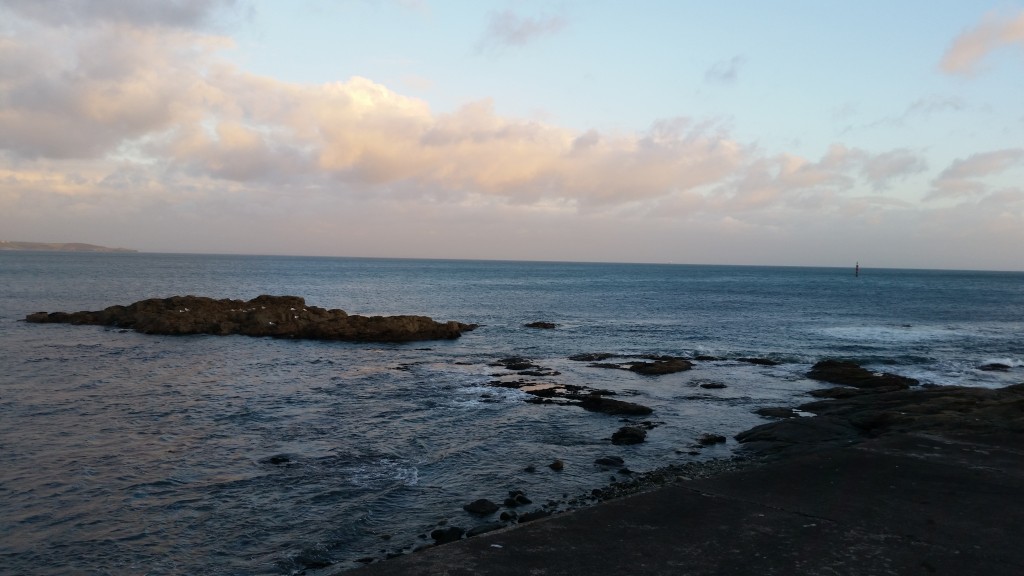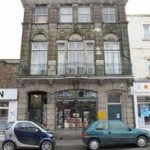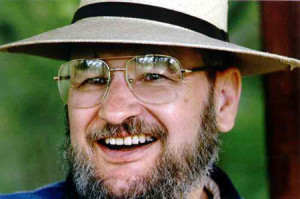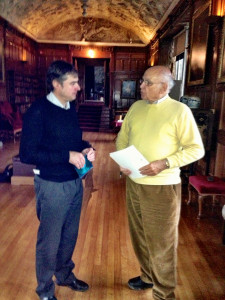Here’s a new poem from Bert Biscoe, Cornish poet, songwriter, mover, shaker and getter of things done. Bert wrote it at the end of the day which had been heralded as one when we would experience a partial eclipse of the sun. Bert reports: “In Truro it was a bit of a damp squib; the light adopted a slightly steely quality, as if it was about to rain, and the gulls were stirred to great anxiety overhead. Many shops closed and staff stood around in the street. Then we all trooped off to our meetings and our counters and our commerce.”
By way of background, Bert adds: “Passmore Edwards was a Victorian philanthropist who made a couple of fortunes and built libraries, convalescent homes and schools – many of which still stand and are much used throughout Cornwall today.”
I remember as a boy spending hours in the Passmore Edwards Library in Liskeard, borrowing the adventure yarns of G.A. Henty, the “Biggles” stories by Captain W.E. Johns about the heroic air ace, and the Leslie Charteris tales of The Saint, dashing adventurer and doer of good. Art Snell was the librarian, and he told me that the first volume of Edward Gibbon’s Decline and Fall of the Roman Empire was often borrowed but the next 5 volumes stayed on their shelf.
Edward Gibbon was Member of Parliament for Liskeard from 1774-80. This was thanks to Edward Eliot (the main character in The Miner & the Viscount) whose wife Catherine was Gibbon’s cousin.
A break in the monotonous day
From Eclipse Street we step through philanthropic doors
Flanked by grandly composed declarations in marble
Of generosities – we talk and think thanks under-tongue,
Inward, least spoken gratitudes, slight quips of breath,
Marked for Octavius and Passmore –
Such men may never grace the Lodge again!
Engineers wrought plastic art to break the great wall
Between Library and Education, Dream and Occupation,
And we stride past catalogued shelves,
Through carousels of earnest commendation –
A civilian copse of titles chanted –
Light from flourished stairwell glass defies eclipse
And austerity dries the lips of book-worn maids
Outcast by despots of digital modernisation –
I stand-to and seek a face, recognition,
A faded eye, one who,
From some distant exchange long-passed,
Mouths ‘Hello!’ over supervisory epaulette –
We each blink a question, resign
Response, accountants cluck, indicators
Flicker, Time consumes librarian-prey,
And marks threaten a second already
Blemished sheet ‘Upstairs!’ I turn away!
The stairs pass borough arms stained by donor’s will,
Each Cornish town’s tale etched in mystic creature
And Herald’s bridges, castles, harbours, fields –
At halfway first-floor-landing Cornish light illumines
Cornish cities set in Victorian glass, they flood ‘Old School –
Trurra Tech!’ and its young artisans’ technical minds –
Masterly voices echo times’-table and foreign verbs
Decline in shadow – outside, disappointment grasps eclipse,
Imperious spires disperse suited toe-capped officials
And coffee-chatty-patent-heeled shop assistants.
Still the fear of established church,
The faithless might again
Erect druidic stones and clasp
The star’s satanic hand and dance – but……
These boroughs’ stamps impress our cards,
A photographic light of pinhole failure
Brightens, order shrouds we sheep, our fold –
The town returns to cold stairs climbed,
Colleagues gather in the Medium Room:
We begin our essential discourse of process –
Lights in salaried hearts flicker, hangovers
Wash over brown memories between trees
Through tumbled inner woods, talk turns
To technicalities, we trade our bargained time.
 Saturday, July 4th, Richard starts a month long journey of travels around his hometown, Cornwall, Britain. With a schedule full of book signings, appearances and activities, he will be sharing his novel with those that live in the heart of it all.
Saturday, July 4th, Richard starts a month long journey of travels around his hometown, Cornwall, Britain. With a schedule full of book signings, appearances and activities, he will be sharing his novel with those that live in the heart of it all.







 many Cornish estates, there is a church right by the house. Why? Because it was originally a priory. When Henry VIII brought about the Dissolution of the Monasteries (the greatest real estate scam in history) many priories plundered from the church were sold to wealthy laymen.
many Cornish estates, there is a church right by the house. Why? Because it was originally a priory. When Henry VIII brought about the Dissolution of the Monasteries (the greatest real estate scam in history) many priories plundered from the church were sold to wealthy laymen.

